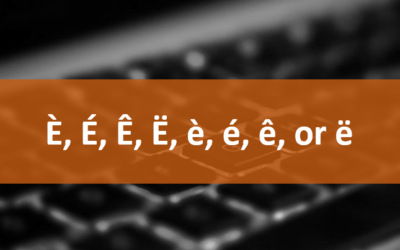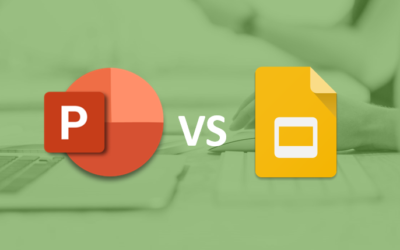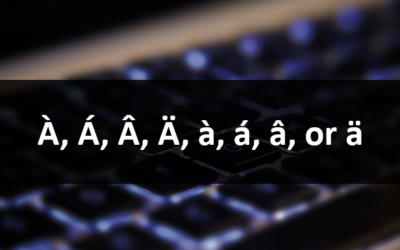Microsoft PowerPoint: Visual Basic for Applications (VBA) Macros | Introduction
PowerPoint Training Series | Level 4
Course Details
Duration: 2 days
Microsoft® PowerPoint® Versions: 2007 | 2010 | 2013 | 2016 | 365
Delivery Methods: Instructor-led classroom (ILC) | Virtual classroom (VC) on request
Course Dates: Contact us to arrange a date | View schedule ![]()
Course Fee: $595 CDN per person + HST or BYOD (bring your own device): $545 CDN person + HST*
Note: public scheduled dates for this course are delivered as live instructor-led classroom training.
Course Overview
This course is designed for the Microsoft PowerPoint user who wants automate tasks using Visual Basic for Applications (VBA) but has little or no programming experience. Students will record VBA macros in PowerPoint using modules, procedures, variables and constants within the Visual Basic Editor (VBE) window.
Prerequisite: Microsoft PowerPoint: Intermediate / Advanced or equivalent knowledge and skills.
Custom training: This course may be delivered at your site or ours as an instructor-led or virtual classroom solution. Contact us at info@avantixlearning.ca for more information including savings for custom group training.
Related training: View all PowerPoint courses
INCLUDED IN THIS COURSE
- Comprehensive course manual or published book
- Keyboard shortcuts quick reference
- Sample and exercise files
- Refreshments (for classes conducted in Avantix Learning classrooms)
- Certificate of completion
- Follow-up email support
Course Topics
Key Concepts
- Using VBA in PowerPoint
- Displaying the Developer tab
- Working in the Visual Basic Editor
- Saving files with macros
PowerPoint Object Model
- What is an object model
- Using the PowerPoint object model
Working with the Visual Basic Editor (VBE)
- Opening and closing the Visual Basic editor
- Displaying windows
- Using the Project Explorer
- Using the Code window
- Moving between Microsoft PowerPoint and the Visual Basic Editor
- Overview of the Properties window
- Purpose of the Immediate window
- Basic code logic
Macro Security in PowerPoint
- Specifying macro security settings using the Ribbon
- Using Trust Centre Settings
Creating Sub procedures
- Sub procedure syntax
- Adding comments
- Conventions when naming macros
- Working with modules and projects
- Using methods and properties
Running Macros
- Running macros in PowerPoint using the keyboard and the Macro dialog
- Running macros using buttons
- Running procedures within other procedures
Using Variables and Constants
- Overview of constants and variables
- Declaring constants and variables
- Specifying scope
If Statements
- Writing If statements
- Using If for single and multiple conditions
Controlling User Interaction
- Overview of the types of dialogs
- Using input boxes and extracting answers
- Creating message boxes
- Specifying status bar messages
- Using dialog box arguments
- Using the Execute, Show and Display methods
Looping
- Using looping to repeat macro steps
Managing Presentation Files
- Using opening and closing methods
- Using the Save and SaveAs methods
- Returning and retrieving information
- Referencing files, folders and drives
- Using methods specific to PowerPoint
Dealing with Errors
- Types of errors
- Simple error handling
- Resuming macros
- Decision structures when dealing with errors
Register Now for a public course at our downtown Toronto location at 1 Yonge Street, Suite 1801 (Toronto Star Building), Toronto, Ontario, Canada.
Do you need more information? Contact us!
Updated January 1, 2017.
Copyright 2014-2017 Avantix Learning Inc.
To request this page in an alternate format, contact our staff.
*Prices subject to change.

Custom training
Register now for a public scheduled course or contact us to discuss custom on-site or off-site training options.
Related courses
Microsoft PowerPoint: Intermediate / Advanced
Microsoft PowerPoint: Design for Non-Designers
Microsoft PowerPoint: Designing and Delivering Accessible Presentations | Introduction
You may like
How to Insert or Type E with an Accent Mark in PowerPoint (È, É, Ê, Ë, è, é, ê, or ë)
You can insert or type e with an accent mark in PowerPoint using built-in tools or keyboard shortcuts (including Alt code shortcuts). The letter e can be inserted with an accent in both upper or lower case in text boxes or placeholders on slides, the slide master or layouts. The following are common accents in upper or lower case – È, É, Ê, Ë, è, é, ê, or ë.
How to Fade a Picture or Part of a Picture in PowerPoint (Using a Gradient)
You can fade a picture in PowerPoint by drawing a rectangle shape on top of the picture and then filling the rectangle with a gradient from opaque to transparent. This technique is often used to fade an image into the background of a slide. Since the rectangle is placed on top of the image and then text may be placed on top of the rectangle, you may need to reorder the objects.
How to Lock an Image, Shape or Other Object in PowerPoint
You can now lock an image, shape or other object in PowerPoint. Objects can be locked in Normal View or Slide Master View. Only PowerPoint 365 users can lock objects to prevent moving and resizing. This is helpful if you want to select and move other objects on the slide or prevent others from moving or resizing an object. You can lock items using the context menu or the Selection Pane.
PowerPoint vs Google Slides (Full Feature Comparison + Benefits)
When comparing PowerPoint vs Google Slides (and trying to decide which is the better choice for your needs), you will need to consider versions when you compare the two applications. In this article, we'll compare the desktop or downloadable version of PowerPoint vs Google Slides, an online program that works in a browser. The key difference then if you are comparing PowerPoint vs Google Slides is that PowerPoint must be downloaded and runs on your desktop and Google Slides runs online. The desktop version of PowerPoint is a robust, full-featured program with many advanced features. You can buy PowerPoint as a stand-alone version or as part of a Microsoft 365 subscription. If you are a 365 subscriber, new features roll out on a regular basis.
You may also like
How to Insert or Type I with an Accent Mark in Word (Í, í, Ì, ì, Î, î, Ï, or ï)
You can insert or type i with an accent mark in Word using built-in tools or keyboard shortcuts (including Alt code shortcuts). The letter i can be inserted with an accent in both upper or lower case. The following are common accented characters that you can insert or type in Word in upper or lower case: grave (Ì or ì), acute (Í or í), circumflex (Î or î) and umlaut (Ï or ï).
How to Insert or Type A with an Accent Mark in Word (À, Á, Â, Ä, à, á, â, or ä)
You can insert or type a with an accent mark in Word using built-in tools or keyboard shortcuts (including Alt code shortcuts). The letter a can be inserted with an accent in both upper or lower case. The following are common accented characters that you can insert or type in Word in upper or lower case: grave (À or à), acute (Á or á), circumflex (Â or â) and umlaut (Ä or ä).
10 Word Shortcuts to Select Text Using a Keyboard
You can use several shortcuts in Word to select text in your documents using only your keyboard. When you select text, it will typically be highlighted in grey. After you select text, you can cut, copy, or delete the selected text or apply character or paragraph formatting.
Microsoft, the Microsoft logo, Microsoft Office and related Microsoft applications and logos are registered trademarks of Microsoft Corporation in Canada, US and other countries. All other trademarks are the property of the registered owners.
Avantix Learning | 1 Yonge Street, Suite 1801 (Toronto Star Building), Toronto, Ontario, Canada M5E 1W7 | info@avantixlearning.ca







